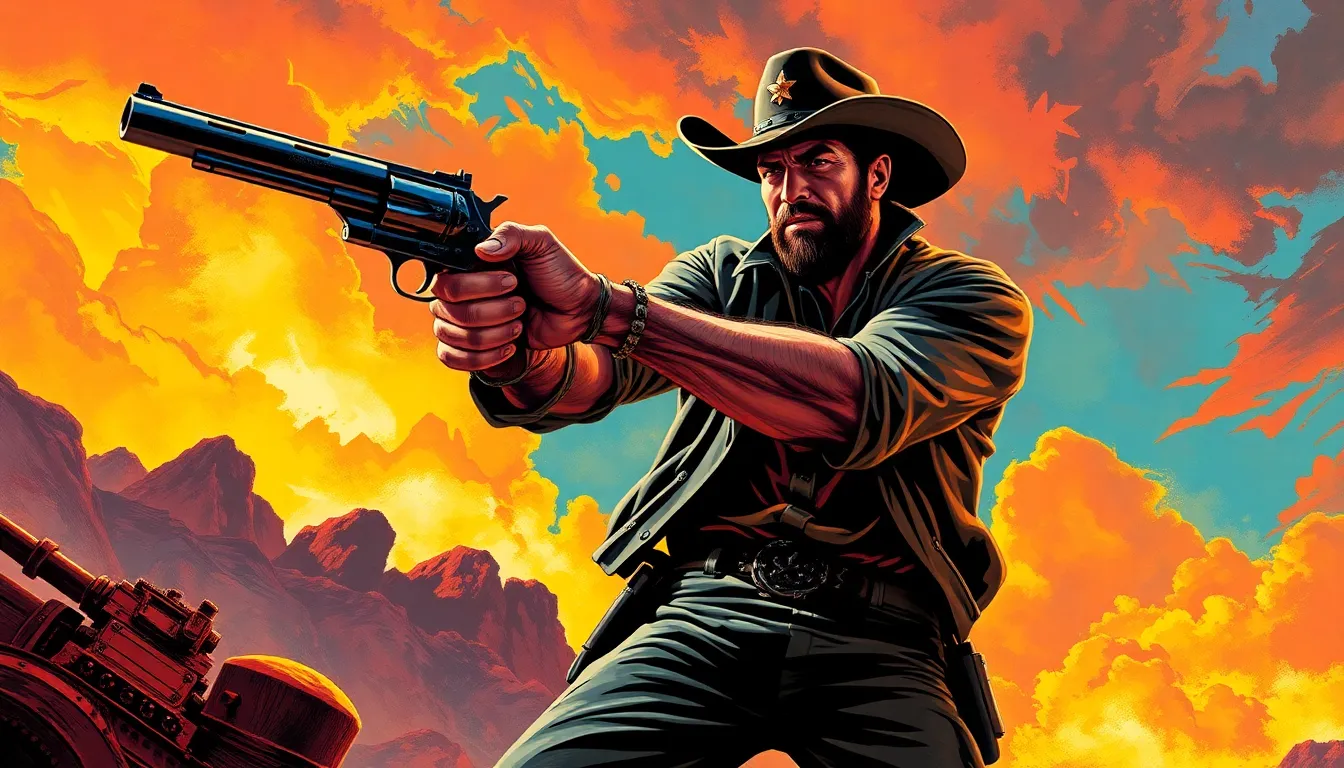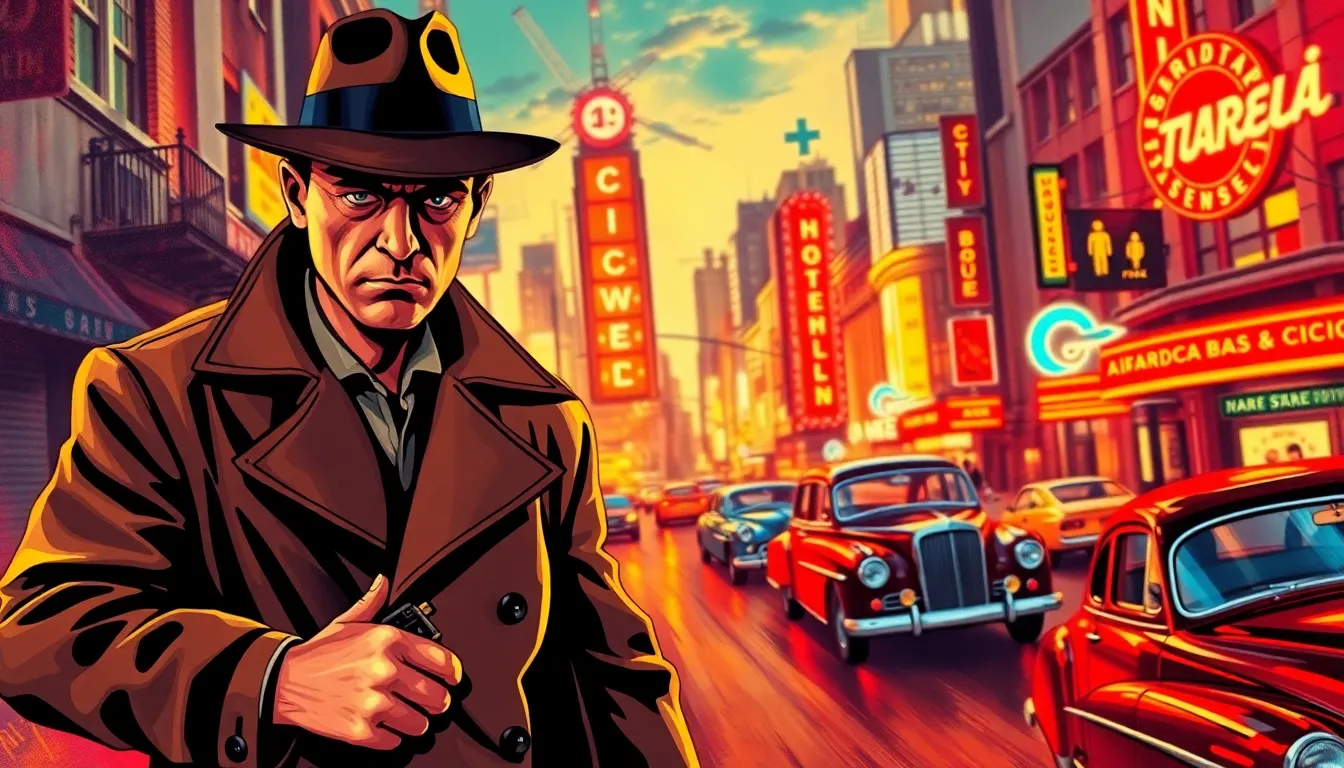Pulp fiction art isn’t just a blast from the past; it’s a vibrant celebration of imagination that’ll make anyone’s walls pop with personality. Born in the mid-20th century, these eye-catching illustrations capture the wild adventures and quirky characters that defined a generation. From daring detectives to glamorous femme fatales, each piece tells a story that’s begging to be shared.
Imagine walking into a room adorned with these colorful masterpieces. Suddenly, it’s not just a space; it’s a portal to thrilling escapades and nostalgic charm. Whether you’re an avid collector or a casual admirer, pulp fiction art offers a unique blend of humor and drama that keeps you coming back for more. Dive into this captivating world and discover why these artworks have stood the test of time, proving that sometimes, the past is the best place to find inspiration for the future.
Pulp Fiction Art
Pulp fiction art emerged in the early 20th century, thriving during the 1930s to 1950s. This form of visual storytelling featured dynamic illustrations on magazines, which catered to the adventurous spirit prevalent in popular culture. Artists like Robert E. Howard and Frank Frazetta brought characters such as swashbuckling heroes and seductive villains to life.
Colorful and bold, pulp fiction art often showcased dramatic scenes filled with action and intrigue. These illustrations frequently depicted exciting narratives involving crime, science fiction, and fantasy. As a result, the art resonated with a broad audience, appealing to both young readers and adults.
Collectors consider pulp art significant due to its rich history and cultural impact. Rare pieces gain substantial value over time, reflecting the nostalgia associated with this genre. Iconic covers may command thousands of dollars at auctions, showing the demand for authentic pulp art.
In contemporary settings, pulp fiction art continues to inspire modern artists and designers. Many incorporate retro aesthetics into their work, showcasing the enduring influence of these vintage illustrations. Through vibrant colors and exaggerated forms, today’s artists pay homage to the past while creating fresh interpretations.
Pulp fiction art captures the imagination, enticing those who appreciate its unique blend of storytelling and visual appeal. The lively artwork adds character to any space, serving as a conversation starter among enthusiasts. Collectors and casual admirers alike find joy in exploring the diverse range of illustrations that define this cherished art form.
The Evolution of Pulp Fiction Art

Pulp fiction art has evolved significantly over the decades. This transformation reflects shifts in culture and artistic expression.
Early Influences
Early influences on pulp fiction art trace back to the late 19th and early 20th centuries. The rise of magazines and cheap paper allowed for widespread distribution of illustrated stories. Artists found inspiration in the adventure novels and comic strips of the time. Key figures like Howard Pyle and N.C. Wyeth contributed bold visuals that captivated audiences. These creators established a foundation for the dynamic style of pulp art, emphasizing action, drama, and exotic locales. Reflective of societal trends, early pulp art often mirrors themes of heroism and escapism.
Iconic Styles and Techniques
Iconic styles and techniques define pulp fiction art’s unique character. Vibrant colors and exaggerated forms dominate the visuals, drawing immediate attention. Techniques such as dramatic lighting and use of perspective enhance the action-packed scenes. Artists often employed bold brush strokes to create a sense of movement. Character design plays a crucial role, featuring larger-than-life figures like rugged heroes and mysterious villains. Composition varies; some pieces focus on single characters, while others depict complex group dynamics. These stylistic choices resonate deeply with fans, cementing pulp fiction art’s lasting appeal.
Key Artists in Pulp Fiction Art
Pulp fiction art features notable artists who shaped the genre through their distinct styles and powerful visuals. Several key figures stand out in this vibrant world.
Prominent Figures
Edmund Emshwiller created striking covers for numerous science fiction and fantasy magazines. His work often combined surreal imagery with dynamic compositions. Robert Maguire became famous for his covers on paperback novels during the 1950s. Maguire’s images of femme fatales captured the attention of readers, blending beauty with danger. Additionally, Frank Frazetta is celebrated for his contributions to fantasy and adventure art. His muscular characters and dramatic scenes pushed the boundaries of pulp art.
Their Contribution to the Genre
These artists contributed significantly to defining pulp fiction’s visual language. Emshwiller’s innovative use of color and composition helped elevate storytelling in illustrations. Maguire’s work introduced a glamorized portrayal of heroes and heroines, appealing to a wide audience. Frazetta’s epic scenes added a sense of adventure that resonated deeply with fans. Collectively, their contributions established a strong foundation for subsequent artists, reinforcing the genre’s enduring appeal.
The Cultural Impact of Pulp Fiction Art
Pulp fiction art has significantly influenced cultural narratives and artistic expressions. This genre reflects societal attitudes and challenges during its heyday.
Representation of Society and Issues
Pulp fiction art often mirrored the prevailing attitudes of the time. It tackled themes like crime, war, and romance, allowing artists to comment on contemporary issues. Illustrations frequently depicted societal dilemmas, such as gender roles and class struggles. Characters faced moral ambiguity, revealing complex human emotions that resonated with readers. The bold visuals of pulp covers showcased not only adventure but also deeper societal critiques. Through these dramatic portrayals, audiences connected with the art on multiple levels.
Influence on Modern Art and Media
Modern artists frequently draw inspiration from pulp fiction art’s vibrant aesthetics. Elements from this genre appear in graphic novels, video games, and film posters, showcasing its lasting appeal. Contemporary designers incorporate retro styles, reflecting a nostalgia for the bold colors and dramatic compositions of pulp covers. Artists like Mike Mignola and Frank Miller have integrated these influences into their work, creating unique narratives. The fusion of past and present highlights the genre’s significance, ensuring it remains relevant to new generations of creators. Pulp fiction art continues to ignite imagination, influencing how stories are visually communicated today.
Conclusion
Pulp fiction art stands as a testament to the power of visual storytelling. Its vibrant colors and dynamic imagery continue to captivate audiences, bridging the past with the present. The genre not only reflects societal changes but also inspires a new generation of artists who draw from its rich history.
Collectors and enthusiasts alike find joy in the nostalgia these pieces evoke. As pulp fiction art evolves, it remains a vital part of cultural discourse, inviting appreciation and exploration. This enduring charm ensures that the legacy of pulp fiction art will thrive for years to come.
